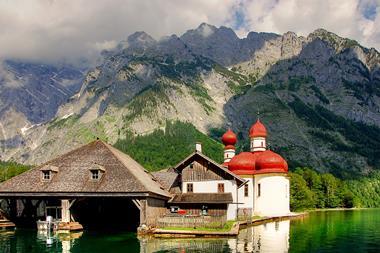The assets of the leading 1,000 European pension funds increased by well over €600bn in IPE’s latest annual survey. A large portion of the rise can be attributed to strong investment returns on the back of a sustained post-COVID rebound over the course of 2021.
Developed market equities returned over 30% in euro terms in 2021, compared with losses of around 4.7% in global aggregate bonds.
European pension funds mostly had another strong year in 2021 in terms of asset growth, with correspondingly larger allocations to equities, alternatives and fixed income.
Equity had strong growth for many funds with further allocation from PFA (7.5%), ATP (5.5%) and ABP (2.9%). However, Alecta, Sweden’s largest fund, shrunk its equities portfolio down to 32.3% from 40.5% the previous year, choosing to focus on alternatives.
A range of different entities are eligible for inclusion in the IPE Top 1000 Pension Funds report with the objective of giving as broad an overview as possible of pension assets in Europe.
While traditional workplace second-pillar pensions make up the largest portion of assets measured, the report also includes funded first-pillar occupational pensions in Finland, monoline pension insurance entities, such as Rothesay Life or PIC in the UK, as well as a number of sovereign funds whose mandate is specifically to finance pensions but which may not have a specified liability horizon.
Among these are France’s Fonds de reserve pour les retraites (FRR), the Swedish AP funds as well as Norway’s asset supertanker – Government Pension Fund Global (GPFG). GPFG’s assets declined in the 12 months to end-June 2022 by a shade over €18bn (equating to -1.5%). The quarter-on-quarter loss for the fund was more drastic at €170bn – reflecting the torrid half year.
IPE has collected the latest asset data available from institutions across Europe – along with asset allocation data from around 100 leading institutions.
While IPE’s research team attempts to use the latest data available (usually at end-2021), the wide spread of reporting dates for the 1,000-plus entities in our universe means IPE must sometimes compare end-2021 figures (later where possible) with end-2020 figures, or even earlier in a few cases.
Currency conversions are made using historical data from OANDA, which uses a 24-hour average rate for the date in question.
IPE’s prime sources are national supervisory authorities, some of which provide comprehensive asset data for all the entities within their purview. IPE then uses annual reports for each institution, or data relating to pension fund sponsoring companies through their annual filings or from S&P Capital IQ’s database.
The report breaks the pension asset figures out per country wherever possible for multinational companies; where this is not possible a consolidated asset total is used, aiming to exclude non-European assets.
The names of entities are standardised where possible when this makes sense, using English translations in some cases but clarity is always the main objective. Sometimes this means using the name of the sponsoring company. This year, as ever, a pensions regulatory overview has been published for each of 16 European countries.













